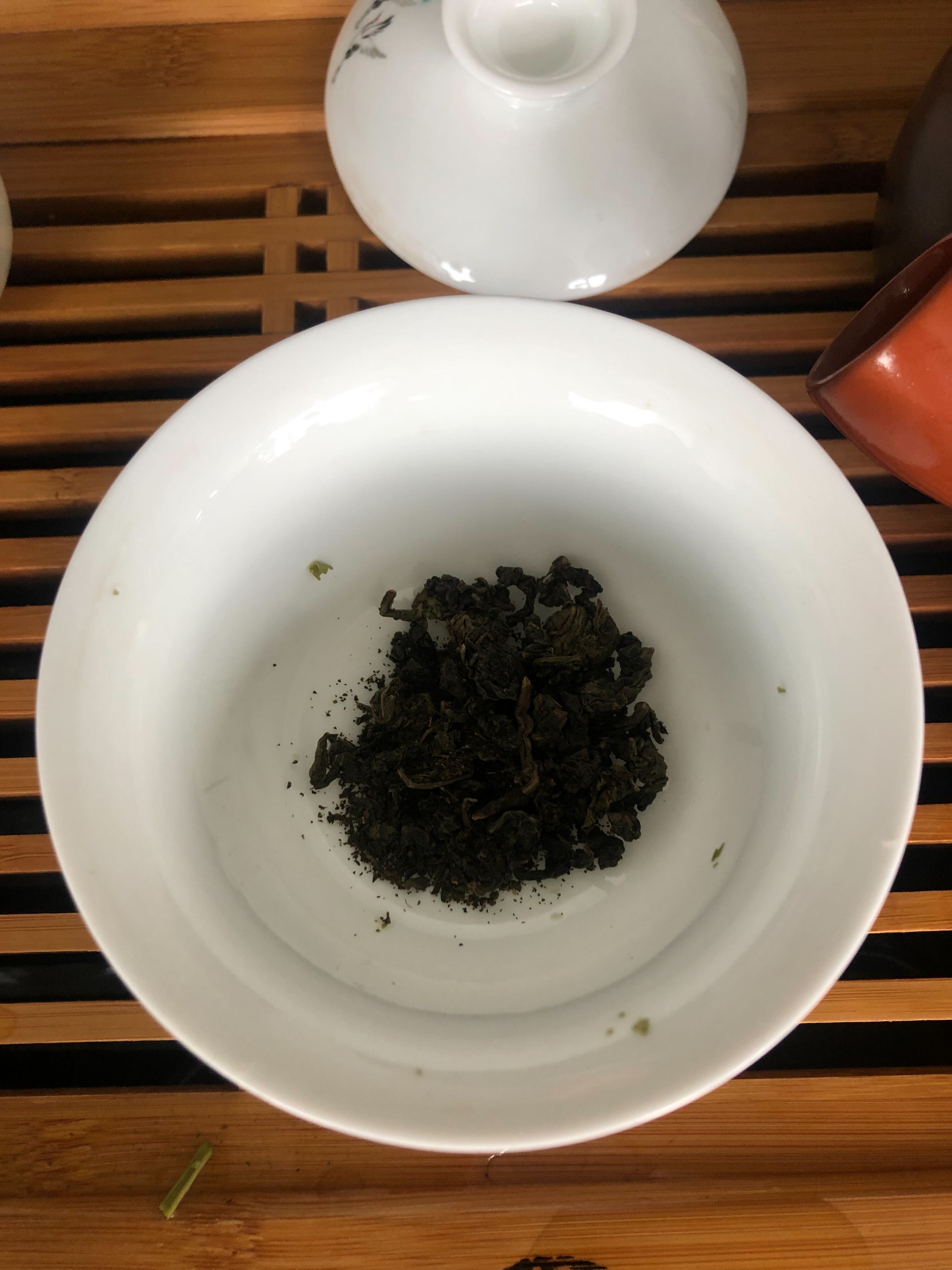Most of us know tea as a bag we pour hot water over in the morning to give it some flavor. However, its traditional preparation is much more interesting and allows us to explore a deeper side of one of the world’s oldest beverages. This kind of traditional preparation was exactly what we demonstrated during the November tea tasting at Logex.
Tea Tasting at Logex: How is tea traditionally prepared?
While most people might know that tea in its traditional form is loose-leaf, fewer are familiar with the proper method of preparation.

What do we need for traditional tea preparation?
For a traditional tea ceremony, several tools are required. First and foremost, there’s the teapot, which is usually very small with a capacity of about 100–150 ml. Instead of a teapot, a gaiwan is often used – a porcelain cup with a lid and saucer.
Besides a teapot or gaiwan, we need cups and a sharing pitcher (cha hai), which is used to pour the brewed tea into before serving it into individual cups. We also use a tea tray (cha pan) – a special tray with holes placed over a basin that collects excess water or spilled tea.
Lastly, an essential part of the traditional ceremony is the so-called tea pet or tea god, a small figurine made of traditional clay. It usually represents mythological creatures or figures from Chinese history. In our case, the tea pet was Master Lu Yu, the author of the first treatise on tea.
In addition to the specific tools, the tea ceremony has a set process consisting of several steps:

Warming the utensils: The first step is warming all the utensils. Hot water is poured into the teapot or gaiwan, then into the sharing pitcher, and finally into the cups. The water is then poured into the tea tray. This process not only offers an aesthetic experience of pouring hot water but also ensures that the tea comes into contact with already-warmed utensils, preventing rapid cooling of the water and tea.
Adding tea leaves: The tea is steeped in water at the appropriate temperature (boiling for most teas, around 80°C for green teas) and left to infuse for about 30 seconds.
Pouring water over the tea: Čaj se následně zalije vodou příslušné teploty (vroucí pro většinu čajů a zhruba 80° pro čaje zelené) a nechá se louhovat cca 30s.
Decanting the tea: After the infusion time, the tea is poured into the sharing pitcher. Most teapots have a built-in strainer, while for gaiwans, the tea is strained through the lid, much like straining pasta from a pot. The tea is then poured into individual cups and served to the guests. A portion of the tea is also poured over the tea pet as a traditional gesture of gratitude and respect, which is believed to bring good fortune to the participants. The infused leaves in the teapot are also presented to the guests for their fragrance.

What teas did we taste?
Tea, regardless of type, always comes from a single plant – the Camellia sinensis tea plant (excluding fruit and herbal teas). However, this plant is processed in different ways to produce various types of tea – green, black, white, or fermented pu-erh. During the tasting, we explored a variety of teas, including:
Thyolo Aged Peony – A white tea from the Thyolo region of Malawi, sourced from the Satemwa Tea Estate. This tea has a delicate citrus flavor with prominent herbal notes
Kukicha – A green tea from Japan, unique for its low caffeine content, as it is made primarily from stems and only a few leaves. It has a vibrant grassy flavor with a strong umami profile (the so-called "fifth taste")
Emei Shan Lu Cha – lehce pražený zelený čínský čaj z hory Emei, vyrábí se pouze z mladých nerozvinutých lístků tzv. tipsů, v chuti je tento čaj krásně oříškový s výraznou vegetálností
Milky oolong - Oolong teas are a lesser-known category between green and black teas. Milky Oolong is one of the most famous, and the one we tasted was infused with vanilla and caramel. Alongside these flavors, the tea had a creamy texture that gives it its name
Zhejiang Jiu Qi Hongmei – A red tea from the Zhejiang region of China. (Note: In China, black teas are referred to as “red tea” because of the color of the infusion, while other countries refer to it as black tea based on the leaf color.) This tea has a rich fruity flavor with notes of plums and red berries
Ceylon OP – A black tea from Sri Lanka in its most traditional form. "OP" stands for Orange Pekoe, a term indicating a common tea grade. This tea has a familiar malty and astringent flavor
2021 Elephant - Shu Bing Cha – A fermented tea from the Yunnan province of China. This specific category undergoes accelerated fermentation, essentially a controlled composting process. The tea is then pressed into shapes, typically 100–400 g cakes, and aged. It has a distinctly earthy and woody flavor
2024 Thé Beginning - Sheng Pu-Erh Blend Bing Cha – 2024 Thé Beginning - Sheng Pu-Erh Blend Bing Cha – narozdíl od shu pu-erhů neprochází sheng pu-erhy zrychlenou fermentací a fermentují postupně s věkem, díky tomu je velký rozdíl mezi mladými pu-erhy, jako je tento a staršími pu-erhy, tento konkrétní tak má výrazně svěží chuť s ostrou chmelovou hořkostí
2016 Tanlong Jingmai Sheng Pu-Erh Bing Cha – A matured pu-erh aged for six years in Malaysia. Its flavor features pronounced notes of dried fruit and dates
2018 Aged Liu Bao – A fermented tea from the Guangxi region of eastern China, which served as an inspiration for the creation of dark shu pu-erhs. Unlike shu pu-erhs, Liu Bao is made from a small-leaf tea variety and has a gentler, less earthy flavor

A big thanks to our colleague Richard, who put together the whole tasting and wrote this article.






